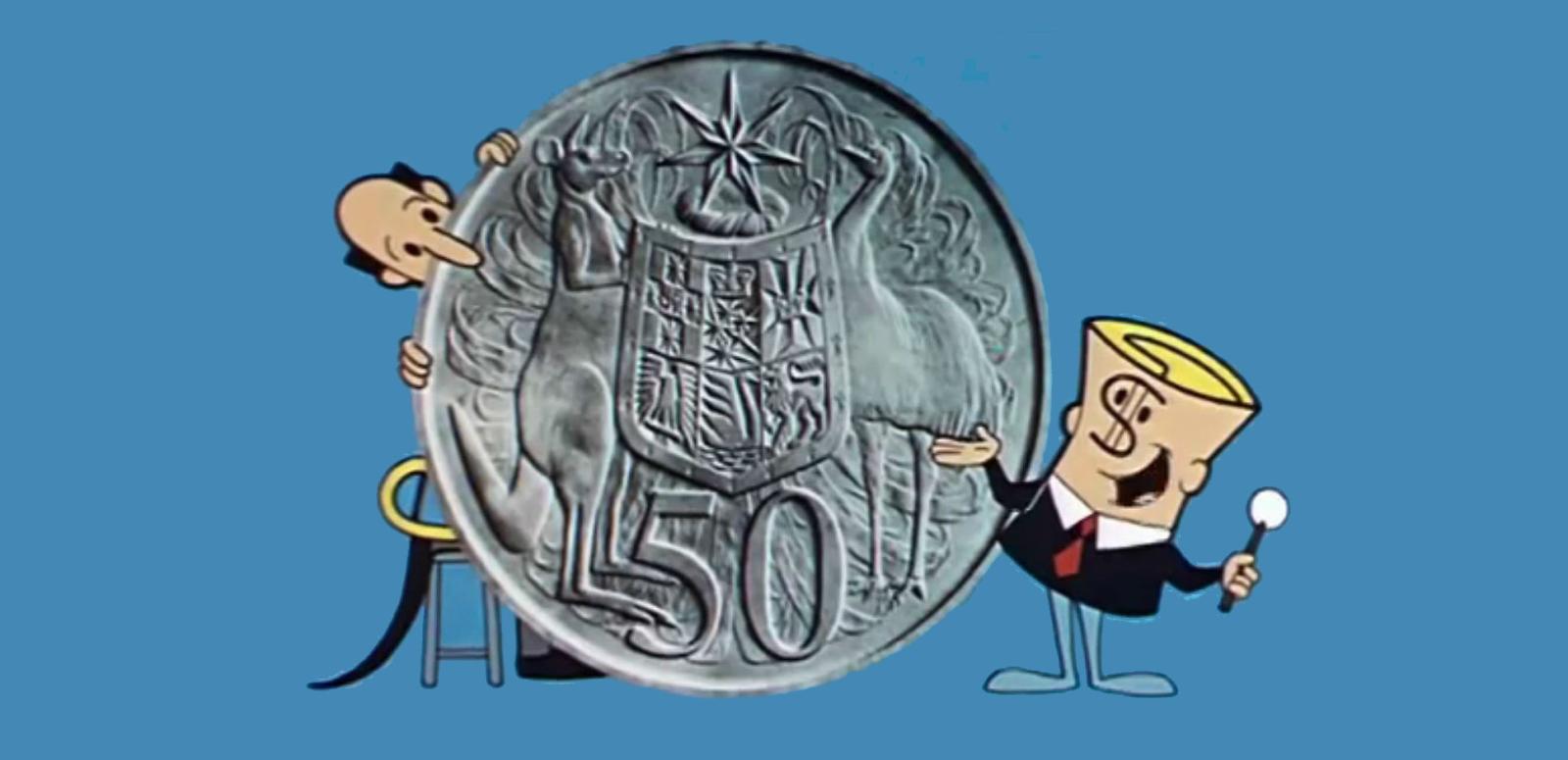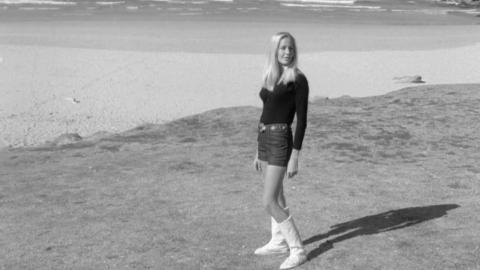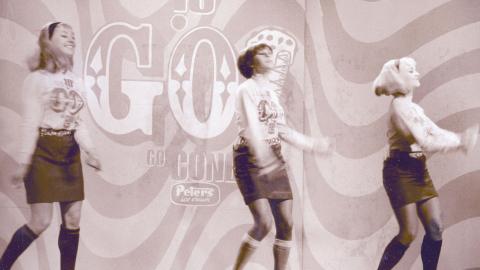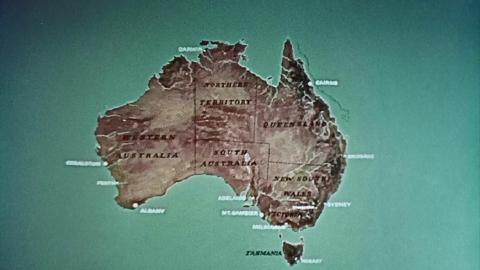

Decimal currency in Australia
Decimal currency in Australia
Australia converted to decimal currency on 14 February – Valentine's Day – 1966.
There was a huge public education campaign in the year leading up to the change. Arguably the most well-loved piece of publicity is the musical animated short featuring Dollar Bill.
Taking advantage of the natural rhyme of ‘pounds, shillings and pence’ becoming ‘dollars and cents’, composer Ted Roberts wrote a jingle to the tune of the folk song ‘Click go the shears’.
Dollar Bill and Australians Keep the Wheels of Industry Turning (Australia, 1965). Produced by Artransa Park Television for the Commonwealth Film Unit on behalf of the Decimal Currency Board. NFSA title: 1413093
After being shown on television night after night from April 1965 until the beginning of change-over in February 1966, the catchy song was well known by Australians. In September 1965 the Decimal Currency Board reported receiving 500 fan letters from children for Dollar Bill.
The identity of the actor who voiced Dollar Bill was kept secret, but today we know he was voiced by actor, comedian and newsreel narrator Kevin Golsby (Division 4, Kingswood Country and Marco Polo Junior Versus The Red Dragon). Actor and voice-over narrator Ross Higgins (Kingswood Country, The Naked Vicar Show and Richmond Hill) voiced the man instructed by Dollar Bill.
The short was produced in colour but it screened in black-and-white on television because colour television didn’t arrive on Australian screens until 1975.
Holla for a dollar
A 20-year-old Ian ‘Turps’ Turpie at the beginning of his career sings his hit ‘The Decimal Point Song’. Turpie looks awkward at times as he mimes the catchy tune to camera and dances self-consciously. Released by Festival Records, the words were written to explain the conversion of pounds, shillings and pence to dollars and cents by Herman Glick. The song was arranged by Vernon Moore.
‘The Decimal Point’ sung by Ian Turpie, Delo and Daly Show, Episode 41 (Australia, 1964). DYT Productions, broadcast on HSV 7 (Melbourne). Courtesy Rolf Schreuder, The GO Entertainment Group. NFSA title: 679352
The hope was that Australians would be humming the song come change-over day:
Let’s hear everybody holla!
Ten bob’s a dollar!
So easy to follow!
Get with it, Gran!
These three television advertisements feature a grandmother and her burgeoning knowledge of decimal currency conversion. The catch phrase is ‘Get with it’.
The third ad features yet another song about currency conversion.
Decimal Currency Conversion Television Commercials (Australia, 1965), produced for the Decimal Currency Board. NFSA titles: 65130, 65137 and 65138
Dollar note bark painting
The story of Yolngu artist David Malangi and how one of his works was used as the design for the new Australian Dollar Bill that was introduced with decimal currency in February 1966. The artwork depicts the ‘mortuary feast’ of one of the artist’s creation ancestors, Gunmirringu, the great ancestral hunter. The Manharrngu people attribute this story as the origin of their mortuary rites.
Note: Aboriginal and Torres Strait Islander viewers are advised that this page may contain images of deceased persons.
Bark Painters: Aborigines of the Northern Territory (Australia, 1972). From the Film Australia Collection. Made by the Commonwealth Film Unit. Directed by Bob Kingsbury.
Designing for decimal
Below, Treasurer Harold Holt and Hal Missingham, Director of the Art Gallery of NSW, introduce the designs for the new decimal currency. By the time change-over day came Holt was prime minister.
We see the process of Stuart Devlin designing the reverse (or tail) of the new coins featuring iconic Australian animals: kangaroo, emu, platypus, lyrebird, spiny anteater (echidna), frilled-neck lizard and the feathertail glider.
New Decimal Coin Designs (Australia, 1964). Produced for the Decimal Currency Board by the Commonwealth Film Unit. Directed by John Morris. NFSA title: 17706
There have been various changes to Australian currency since 1966. The round 50 cent piece design and metal composition was changed to the 12-sided (dodecagon) design we have today in 1969. In 1984 one dollar notes were replaced by one dollar coins with a reverse design featuring five kangaroos. Two dollar notes were replaced by two dollar coins with a reverse design featuring an Aboriginal elder in 1988. One and two cent coins were withdrawn from circulation in 1992. Paper banknotes were replaced with Australian-designed polymer banknotes one denomination at a time from 1992-96.
Change-over day arrives
This mostly silent footage from Melbourne’s Eyewitness News, Melbourne shows scenes of change-over day including people getting change in shiny decimal currency, new bank notes and scenes from a bank.
Decimal currency change-over day, Eyewitness News (Australia, 1966). Courtesy: Network Ten. NFSA title: 1454557
Making a mint
This documentary from 1988 about the Royal Australian Mint in Canberra shows the history of currency in Australia from the holey dollar to the solid gold kangaroo coin and decimal currency.
The Royal Australian Mint (Australia, 1988). Directed by Varcha Sidwell. Produced for The Royal Australian Mint by Film Australia. NFSA title: 1459616
Clink go the cents
Full lyrics for the song Dollar Bill sings:
In come the dollars and in come the cents
to replace the pounds and the shillings and the pence.
Be prepared folks when the coins begin to mix
on the 14th of February 1966.
Clink go the cents folks
clink, clink, clink. Change-over day is closer than you think.
Learn the value of the coins and the way that they appear
and things will be much smoother when the decimal point is here.
In come the dollars and in come the cents
to replace the pounds and the shillings and the pence.
Be prepared folks when the coins begin to mix
on the 14th of February 1966.
Want to be the first to hear stories and news from the NFSA?
Subscribe to our newsletter and never miss out.
The National Film and Sound Archive of Australia acknowledges Australia’s Aboriginal and Torres Strait Islander peoples as the Traditional Custodians of the land on which we work and live and gives respect to their Elders both past and present.


